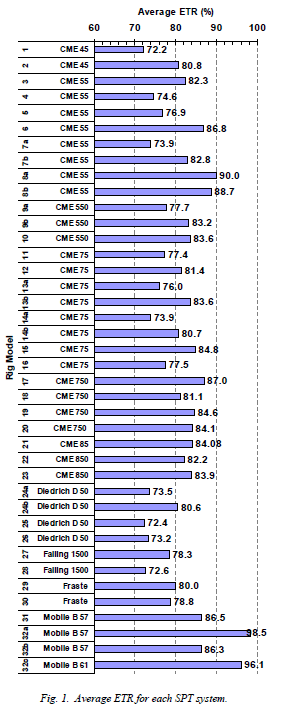Geosubhtech
Geotechnical
- Jan 2, 2018
- 57
Dear All,
I just want to understand why there is a restriction in ASTM D4633 Clause 4.2 Note - 1 regarding the limitation of the SPT hammer energy evaluation of the hammer in between 10 to 50. In definition of the N- value it is understood that the blows required for 300mm penetration by ignoring initial 150mm penetration. So it is restricted not to conduct the tests in soft clay or very stiff clay and relative degree of packing in cohesionless soils. As per ASTM D1586 the refusal criteria mentioned are very different than the limitations in ASTM D4633. As per ASTM D4633 i can conduct the hammer efficiency tests up to 10 < N-value > 50. But in ASTM D1586 i can do SPT up to 100 (with other 3 refusal conditions). As the SPT-N is also inversely proportionated with hammer energy so it is not clear for getting the test done in some type of soils. So, here i am having Automatic hammers with hammer efficiency up to 92% so there is a requirement of reducing the hammer efficiency as per employer requirements. So, the tests were not getting qualified just in the name of limitation in ASTM D4633.
So, it would be very much helpful if i can get the expert's advice on this.
I just want to understand why there is a restriction in ASTM D4633 Clause 4.2 Note - 1 regarding the limitation of the SPT hammer energy evaluation of the hammer in between 10 to 50. In definition of the N- value it is understood that the blows required for 300mm penetration by ignoring initial 150mm penetration. So it is restricted not to conduct the tests in soft clay or very stiff clay and relative degree of packing in cohesionless soils. As per ASTM D1586 the refusal criteria mentioned are very different than the limitations in ASTM D4633. As per ASTM D4633 i can conduct the hammer efficiency tests up to 10 < N-value > 50. But in ASTM D1586 i can do SPT up to 100 (with other 3 refusal conditions). As the SPT-N is also inversely proportionated with hammer energy so it is not clear for getting the test done in some type of soils. So, here i am having Automatic hammers with hammer efficiency up to 92% so there is a requirement of reducing the hammer efficiency as per employer requirements. So, the tests were not getting qualified just in the name of limitation in ASTM D4633.
So, it would be very much helpful if i can get the expert's advice on this.

